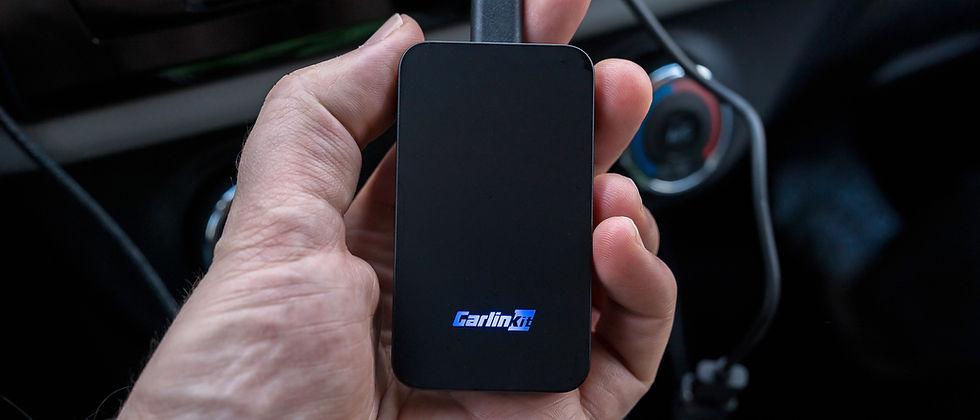How to Upgrade Your Car Stereo Without Replacing the Head Unit
- Danny Floyd

- Feb 12
- 4 min read
In 2025, car audio upgrades don’t require a full dashboard teardown. You can massively improve your in car sound without touching the stock head unit.
Whether your vehicle has a factory fitted touchscreen or a dated single DIN radio, there are several smart ways to enhance your stereo performance while keeping the original system intact.
In this guide, we’ll cover practical, tech forward solutions, from plug and play DSPs to speaker swaps, that’ll boost audio quality without compromising integration or vehicle aesthetics.

Why Not Replace the Head Unit?
Factory head units, especially those found in newer vehicles, are often deeply integrated into climate controls, backup cameras, and vehicle diagnostics. Replacing them risks losing features, not to mention compatibility headaches and higher costs.
Luckily, upgrading your sound doesn't require ditching the stock system. Let’s walk through your best options.
1. Upgrade Your Speakers
Impact: High
Complexity: Moderate
Cost: £50 to £300 per pair
Your factory speakers are likely the weakest link in your car’s audio chain. Upgrading them can result in tighter bass, clearer vocals, and better overall sound definition, even with the stock head unit.
Tips for choosing replacement speakers:
Match the impedance and sensitivity to your factory system (usually 4 ohms).
Stick with coaxial speakers for quick swaps (these combine the woofer and tweeter in one unit).
Use sound deadening material like Dynamat to reduce road noise and improve speaker performance.
This alone can be a game changer for budget conscious DIYers.
2. Add a Digital Signal Processor (DSP)
Impact: Very High
Complexity: Moderate to High
Cost: £150 to £600
A DSP is the secret weapon of modern car audio upgrades. It takes the signal from your factory head unit and cleans it up, correcting frequency imbalances and letting you fine tune the soundstage.
Some models include built in amplifiers, and many support high level inputs (so no need for RCA outputs from your head unit). Advanced DSPs even include Bluetooth tuning apps for adjusting your EQ on the fly.
Top brands to consider:
Audison bit One
Helix DSP Mini
Dayton Audio DSP 408
If you want audiophile grade sound without gutting your dash, start here.
3. Install an Underseat or Compact Subwoofer
Impact: Medium to High
Complexity: Low to Moderate
Cost: £100 to £350
Factory systems typically lack low end punch. A powered subwoofer mounted under the seat or in the boot solves that instantly.
Look for active subwoofers with built in amps and high level input support so they can hook directly into your factory speaker wires. These subs won’t rattle your number plate, but they’ll fill out the sound beautifully.
Top picks in 2025:
Pioneer TS WX130DA
Kenwood KSC PSW8
JBL BassPro SL2
They’re slim, easy to hide, and incredibly effective.
4. Use a Line Output Converter (LOC)
Impact: Enabler (for amps/subs)
Complexity: Moderate
Cost: £20 to £80
If you’re adding an amplifier or subwoofer to a stock stereo without RCA pre outs, a line output converter is essential. It converts speaker level outputs into RCA level signals your amp can work with.
Some high end LOCs (like those from AudioControl or Kicker) come with built in signal restoration and automatic turn on features, making them more than just a simple converter.
Always connect to the rear speaker wires for cleaner signals and fewer interference issues.
5. Install a Bluetooth Streaming Adapter
Impact: Convenience & Functionality
Complexity: Low
Cost: £10 to £60
If your factory head unit lacks modern streaming features like Bluetooth or USB C, you can still modernise it.
Here’s how:
Bluetooth AUX adapters (like the TaoTronics TT BR010) plug into your AUX port.
FM transmitters can send a Bluetooth signal over unused FM radio frequencies.
Some OBD2 powered adapters offer hands free calling and navigation support.
You can also look for Bluetooth integration kits specific to your make and model, especially for vehicles from brands like BMW, Audi, or Ford.
6. Use Sound Deadening Materials
Impact: Subtle but Effective
Complexity: Moderate
Cost: £50 to £200 depending on coverage
Even the best gear won’t shine in a noisy cabin. Apply sound deadening mats inside door panels, under carpets, and in the boot to reduce road rumble and vibration.
Brands like Dynamat, Noico, and FatMat are easy to install and can make a surprising difference in clarity and bass performance.
Optional: Add an Amplifier with High Level Inputs
Impact: High
Complexity: High
Cost: £100 to £400
Want to unlock the full potential of those upgraded speakers? A compact amp with high level inputs can be wired straight to your factory system, no head unit replacement needed.
Many modern amps are Class D, meaning they’re more compact and energy efficient. Mount them under a seat or behind trim panels for a stealthy upgrade.
Look for:
Alpine KTP 445U
JL Audio XD400/4v2
Focal Impulse 4.320
Final Thoughts
Upgrading your car stereo without replacing the head unit is not only possible in 2025, it’s often the smartest move. With the right gear and approach, you can unlock crystal clear highs, richer mids, and punchy bass while keeping your car’s factory controls and interface fully intact.
Whether you’re a daily commuter or a weekend road tripper, a better in car audio experience is totally within reach.
Danny Floyd
Car Tech & Mods Specialist, Upgrades & Tech Column




Comments